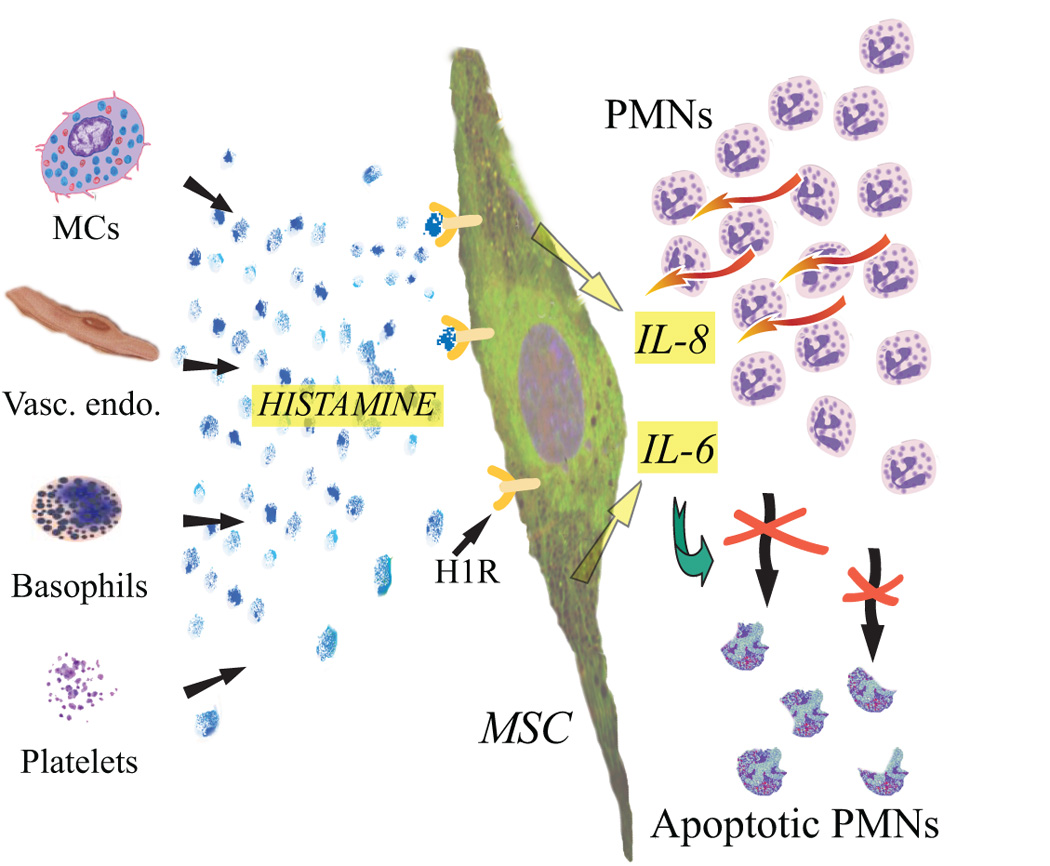Fig. 8.

A schematic drawing summarizing the hypothesized effect of histamine stimulation on BMSCs. The histamine might derive from a variety of cellular sources (or might be added as a prestimulation before delivering the cells) and effects the H1 receptor of the BMSC. In response the BMSCs will increase their IL-8 production, a cytokine that is a strong chemoattractant for neutrophil granulocytes. At the same time, the increased release of IL-6 will ensure the better survival of these attracted cells by its strong anti-apoptotic function. Thus the end-result is a larger number of live, functioning neutrophil granulocytes that will normalize an inflammatory /infectious environment.
